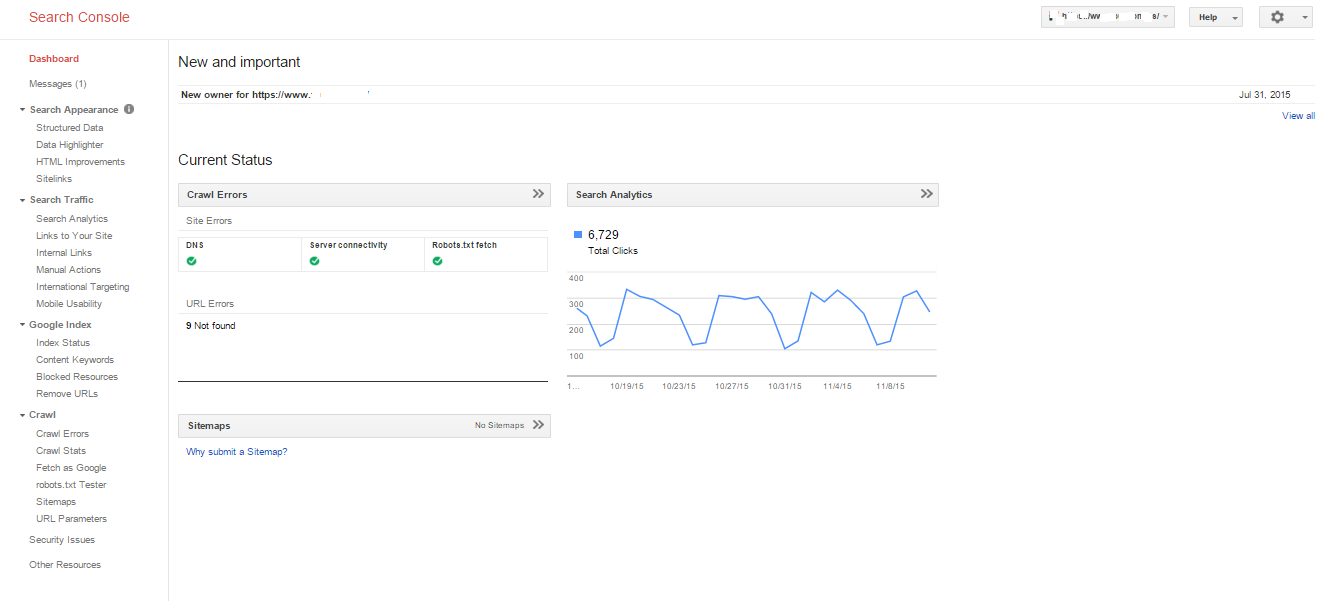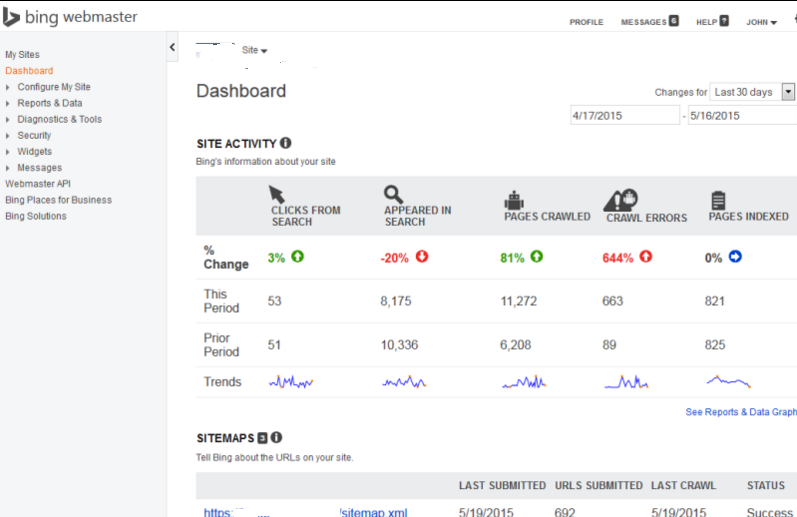Updated: Apr 26, 2019
In this blog, we will be looking at account set up and some of the important features in Google Search Console (formerly Google Webmaster Tools) and Bing’s Webmaster Tools. So let’s dive straight in!
- Account Set–up
- Add & Verify Account
- Adding Sitemaps (Google vs Bing)
- Dashboard
- Search Query Data
- Sitelinks vs Deep Links
- Application Programming Interface (API)
- Disavow Links
Google Search Console is a free web service by Google for web analysts and webmasters. The service offers tools for webmasters to troubleshoot the crawling of their website, submit sitemaps, check and set the crawl rate from Googlebot, provides a list of internal and external pages that link to the site, receive notifications from Google for manual penalties and many more features. Bing Webmaster Tools, which was launched on June 3, 2009, is Microsoft’s version of Google Search Console.
Account Set-Up (Google vs Bing)
You will need a Microsoft account to set up a Bing Webmaster Tools account. Hotmail and Outlook.com account users already have Microsoft accounts. You will need a Google account to set up a Google Search Console account.
Add & Verify Account
You will need to verify your site in Search Console and Bing Webmaster Tools.
Adding & Verifying your Account in Search Console
In Google Search Console, you can verify your account by following any one these steps:
- Upload a file to your server.
- Add a meta tag to your website’s source code.
- Add a new DNS record.
- Use Google Analytics or Tag Manager Account.
Adding & Verifying your Account in Bing Webmaster Tools
You can verify your Bing Webmaster Tools account by following any one these steps:
- Upload a file to your server ( XML file).
- Add a meta tag to website’s source code
- Add a CNAME record to DNS.
Adding Sitemaps (Google vs Bing)
Sitemaps are a great way to tell search engines the URLs on your site.
Bing and Google support the following formats for sitemaps:
- XML Sitemaps and XML Sitemap index files (as specified by www.sitemaps.org)
- Atom 0.3 and 0.1
- RSS 2.0, and
- Text files (containing one URL per line)
Note: Sites created using Google Sites have sitemaps that are auto generated.
Dashboard
Each time you log in to either Bing or Google Webmaster Tools, you’ll see a few stats regarding your site. Google’s dashboard provides you the basics of your website as they appear in Google search, such as search queries, errors, as well as URLs that are indexed through your sitemaps.
Bing provides a wider variety of data regarding your site as it is available in Bing search; these include all things from inbound link count to clicks from search.
Google Search Console Dashboard
Bing Webmaster Tools Dashboard
Search Query Data
Are you curious as to how your site ranks among the search engines for any given keywords, amount of impressions, and click through rate for the keywords? Both Bing and Google Webmaster Tools can give you this information.
In Google Search Console Dashboard, if you head over to “Search Analytics” under “Search Traffic,” you can view all the keywords that produced the highest number of impressions through organic search on your website. This is only limited to the Google search engine and provides data for the previous 3 months.
There is a limit to the number of queries you can pull from Google Search Console: 999 queries from Google Search Console Dashboard and 5,000 from the API.
In Bing, you can access the same information if you head over to Search Keywords under “Reports & Data”. This section displays all queries that were served up in organic search for the previous 6 months.
Sitelinks vs Deep Links
Sitelinks are links that appear beneath top-ranked search results in Google Search and they link directly to landing pages within the site. These links are called Deep Links in Bing. Deep Links can be added or removed in Bing Webmaster Tools. In Google Search Console, sitelinks can be demoted in the search console if you do not want specific links appearing in Google search.
SITELINKS in Google Search Console
DEEP LINKS in Bing Webmaster Tools
Application Programming Interface
You can access Bing webmaster information via an API. Click here for more information.
For more information on the Google Search Console API, click here.
Disavow Links
Bing and Google have tools webmasters can use to clean their link profiles and notify the search engines of spam or untrustworthy links pointing to their site.
There are a lot more features not discussed in this article. For more information, visit Google Search Console and Bing Webmaster Tools.














